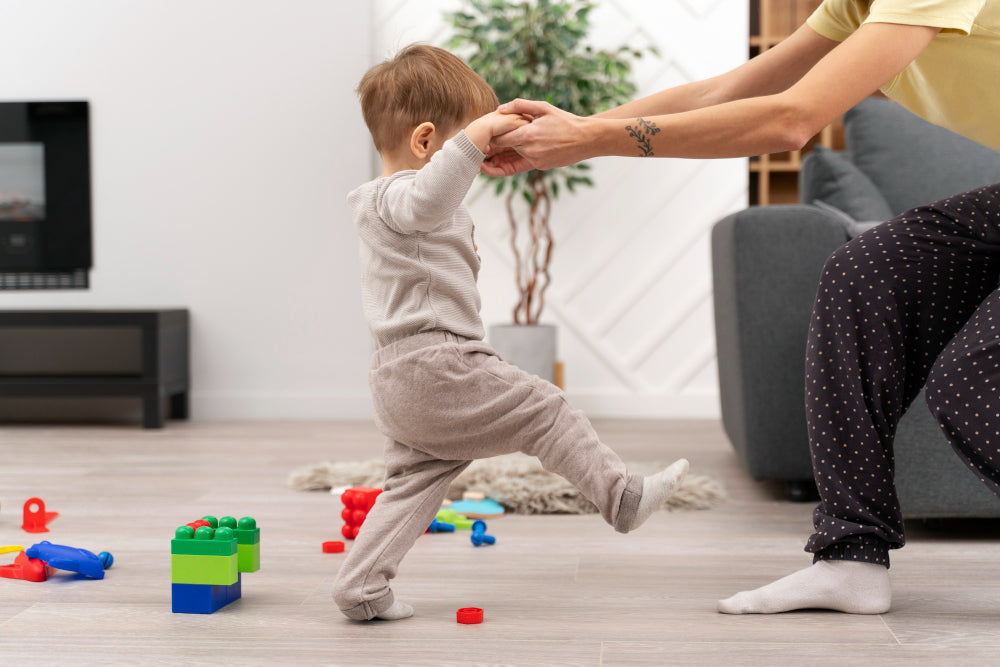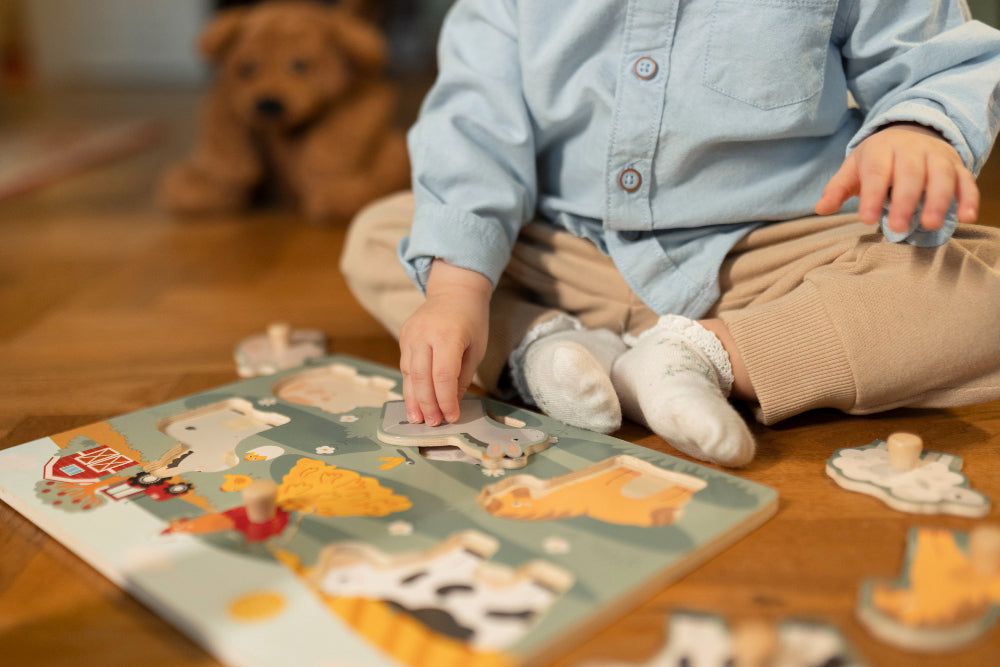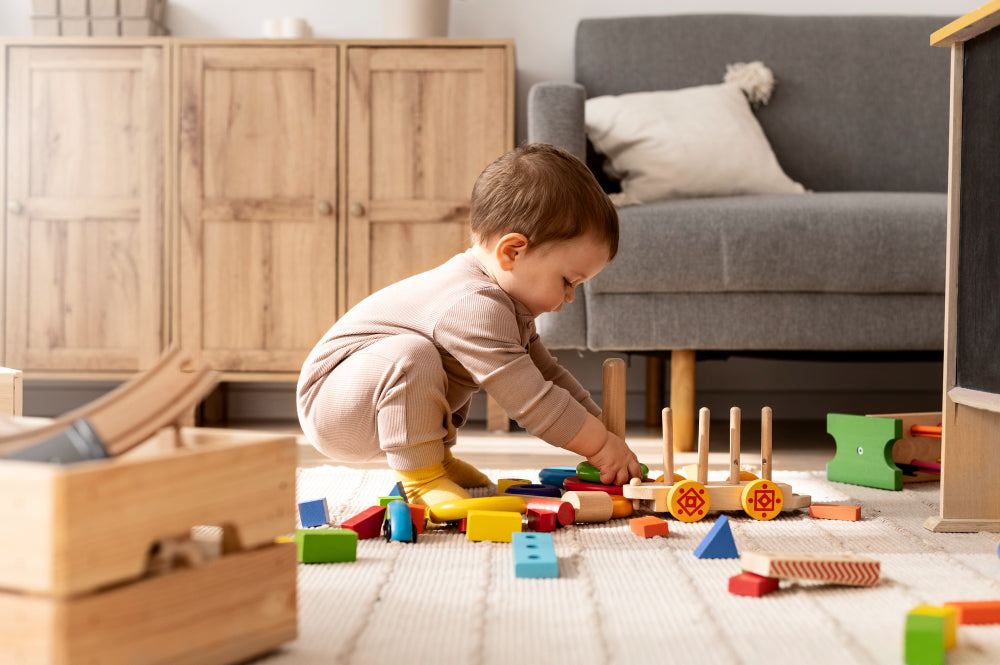
Traditional Wooden Nadavandi: Nostalgia Meets Safety for Babies
A classic item, such as the traditional wooden Nadavandi, the baby walker, is a perfect combination of nostalgia and current safety standards.
In the era of plastic and computerized toys, parents seek the most best options, which is the trend towards eco-friendly products. KidsBestie also follows this trend by selling the classic items such as the traditional wooden Nadavandi, the baby walker, which is a perfect combination of nostalgia and current safety standards. It is not just a plaything because it is a handmade wooden toy that also serves as a reliable friend in the initial steps of your baby, accompanied by healthy growth, without violating tradition.
What is a Nadavandi? Understanding the Classic Wooden Walker
The Nadavandi, or walking cart in Tamil, has traditionally been a household staple in South India. Its minimalistic but durable wooden frame is made to help babies grow to learn to stand and walk. The wooden Nadavandi allows natural movement and is safe compared to most contemporary plastic walkers which limit natural movement as well as create safety issues, the Nadavandi allows the child to develop good balance and coordination by offering a stable supportive base upon which little legs can build strength and confidence.
Features of Wooden Nadavandi
The most important thing is safety, and the traditional wooden Nadavandi is dazzling with non-toxic and natural wood and baby safe paints. Stable and child-friendly handling is guaranteed by rounded edges and long-lasting wheels. Parents also love the fact that this walker avoids falls since it makes babies use natural walking movements rather than forcing them into forced standing on their feet or sweeping easy rides that some other plastic walkers use.
Promoting physical development through natural movement
The Nadavandi promotes the physical development of a child in a comprehensive way other than safety. As babies move this walker, they build leg muscles and enhance gross motor skills that are necessary in walking independently. Pushing assists in building up the shoulder and arm strength also, which encourages a coordinated, cohesive movement and balance development. Pediatricians prefer these kinds of push walkers to the seat-based ones because they can enable the development of milestones that do not interfere with the posture and muscle utilization. 
As a cultural heirloom connecting generations
The wooden Nadavandi has also a strong cultural meaning. Such a common stroller is a living connection with the past generations as it brings a sense of warm nostalgia and helps to foster the principles of sustainability and responsible parenthood. Made with love and crafted by talented artisans using responsibly sourced wood, it embodies eco-friendly parenting in practice. The selection of a Nadavandi is in line with maintaining tradition and using natural and toxin-free materials that are mild to children and the environment.
Enhancing Parent-Child Interactions
The Nadavandi made of wood is used to produce valuable interactions between babies and caregivers. It calls on attentional oversight in the joyful circle of encouragement as the child learns to move. The old fashioned walker also triggers the imagination of the child making him resort to pretend playing after the functional learning stage. Being an heirloom toy, it can be passed down to other siblings, which can complement family ties with physical memories.
It is easy to maintain, and all that is needed to keep the walker clean and fresh is a quick wipe with a wet cloth. Its natural wood ages well and can be restored by applying natural oils occasionally, to preserve shine and avoid cracks. This strength renders Nadavandi an investment that can be used over a long period without necessarily going through the normal shelf life of plastic walkers.
Final Thoughts
The traditional wooden Nadavandi walker fits neatly into any nursery or playroom and is ideal with babies between the ages of about 9 months and 2 years. The fact that it can be used on smooth surfaces makes it possible to explore indoors and develop the confidence of the child during these important initial years. According to parents, babies on Nadavandi acquire faster motor skills and have superior balance in relation to those who are only using plastic walkers or standing unassisted. 
The kidsBestie Traditional Wooden Nadavandi walker is a wonderful blend of the old and the new, offering a safe, durable and enriching toy that offers a better and more eco-friendly choice of toy to help babies learn to walk. To parents who believe in nostalgia and safety, this walker is a perfect option - it represents tradition, responsible parenting, and happy milestones.
FAQs
Q1. What is the optimal age of using the traditional wooden Nadavandi?
The majority of infants are able to use Nadavandi at about 9 months of age, particularly when they begin to pull themselves on to stand or move around on the furniture. Early use should be monitored.
Q2. What is the difference between a wooden Nadavandi and plastic walkers of the modern world?
The wooden Nadavandi can be used to promote normal motor development with safe and sturdy support unlike the plastic walkers which can encourage improper posture or limit natural movement.
Q3. Is Nadavandi safe even among babies?
Yes, it is manufactured using non-toxic substances, rounded edges and stable wheels that facilitate secure and gentle learning to the infant.
Q4. Is Nadavandi an outdoor product?
It is most effective on flat and smooth indoor surfaces to ensure the highest level of stability and avoid accidents.
Q5. But what about the wooden Nadavandi? how do I keep it?
Wipe it with a damp cloth regularly and wipe it occasionally with natural wood oils so as to keep its finish and durability intact.



